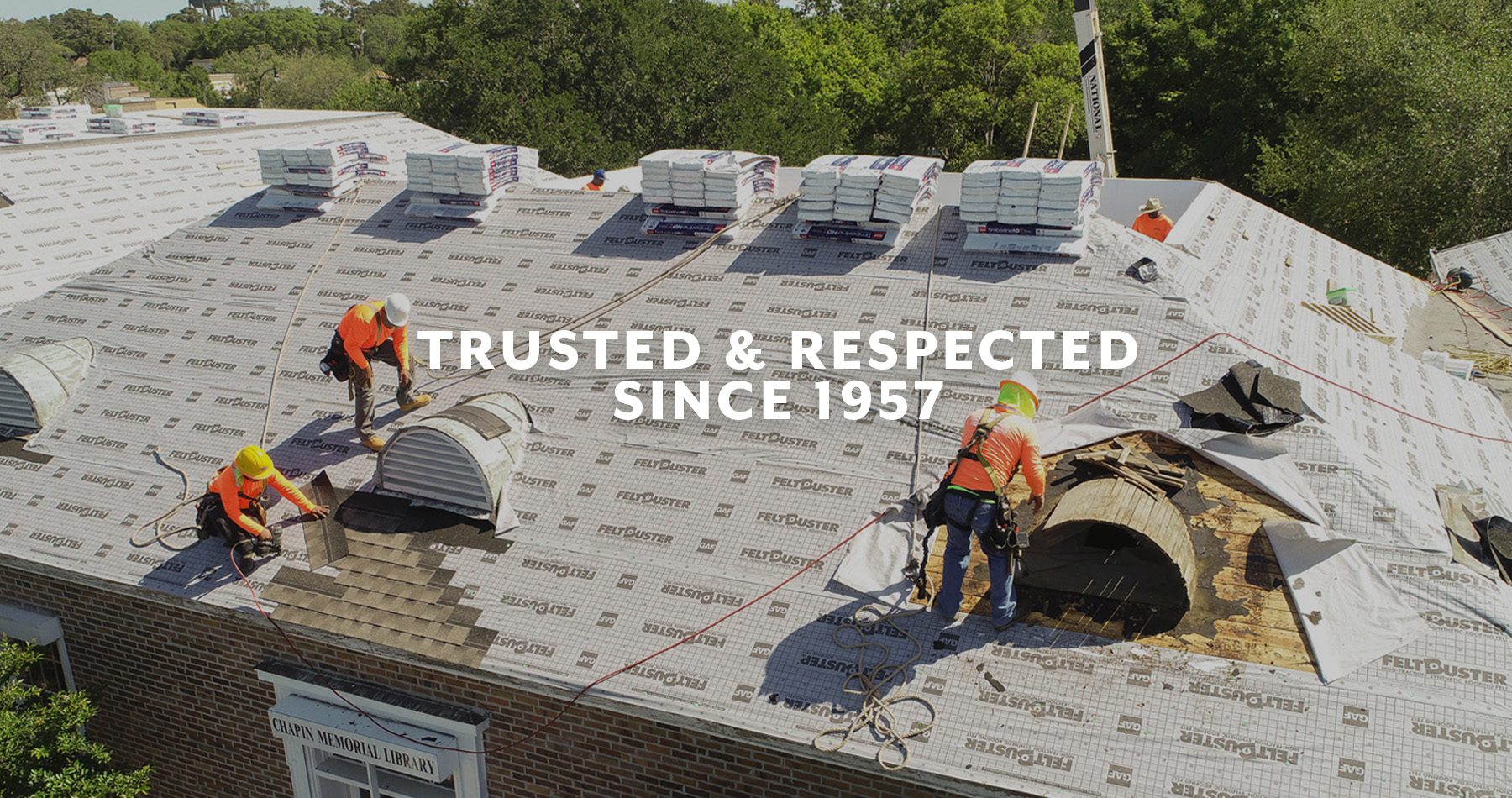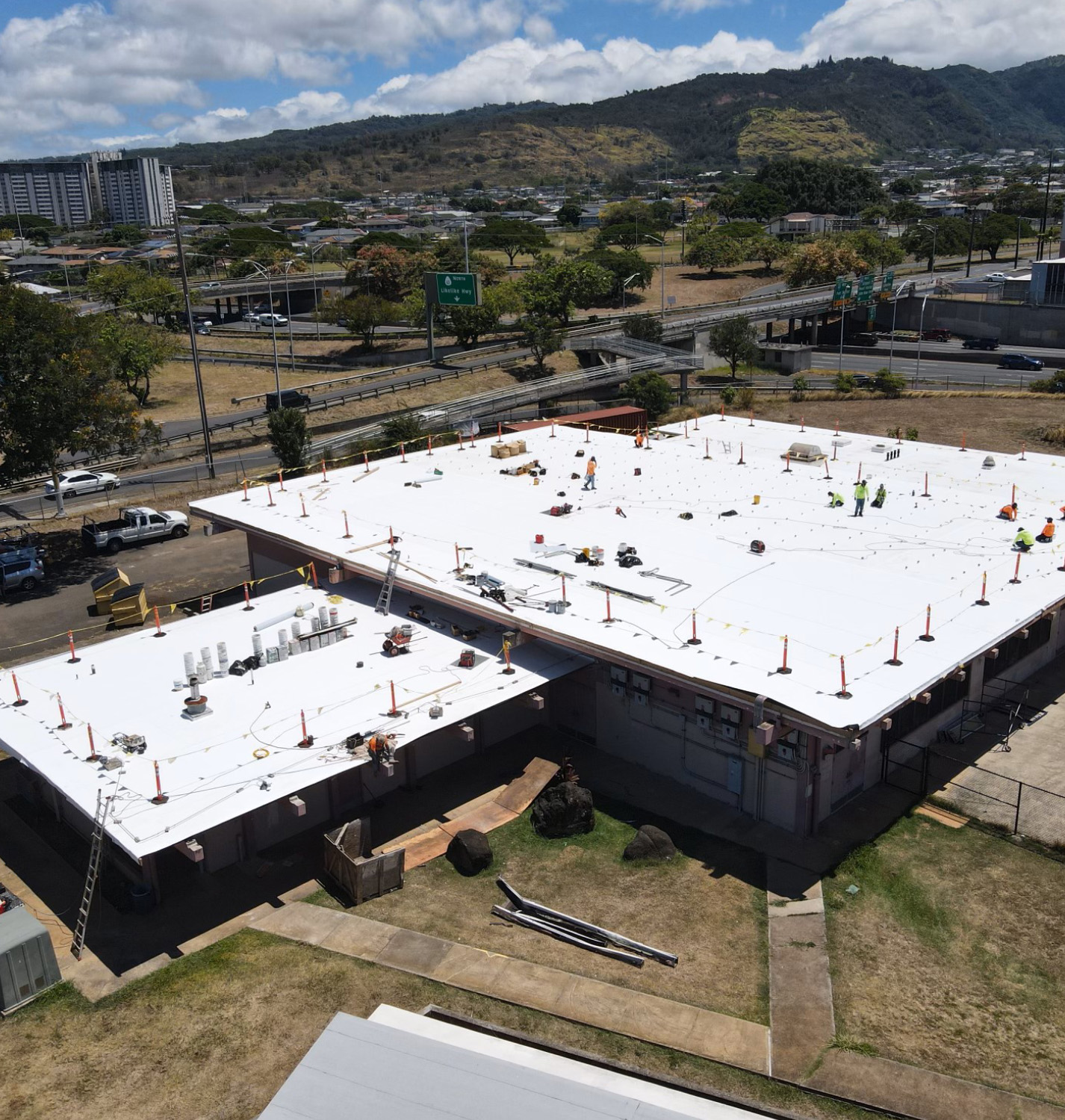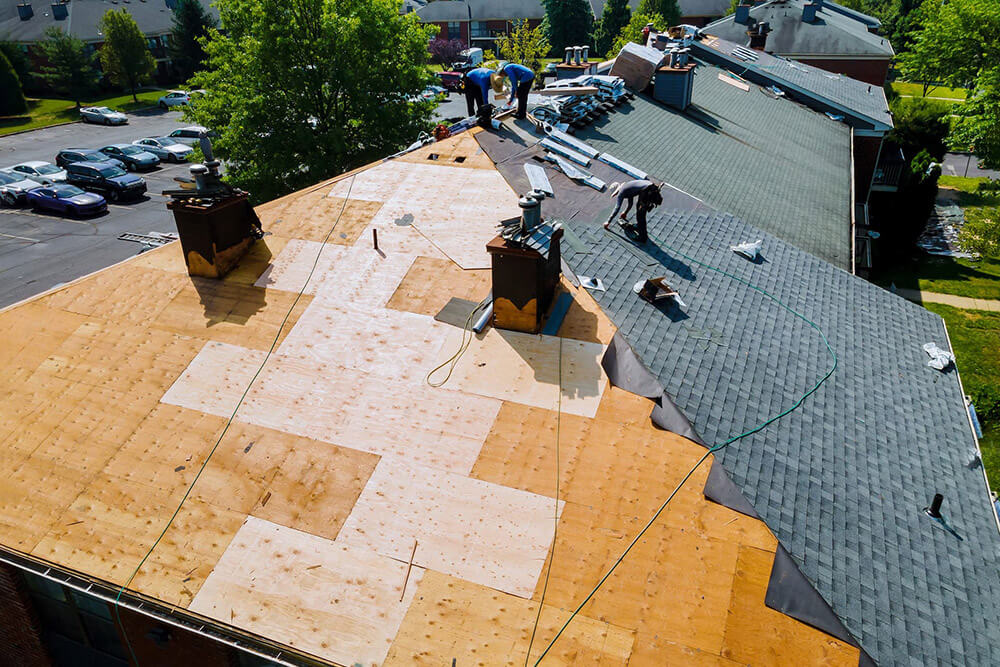Reveal Typical Roofing Problems and How to Address Them Properly
When it concerns your roofing system, identifying issues early can save you money and time. You may notice water discolorations on your ceiling or cracked roof shingles during your regular checks. Disregarding these indications can lead to larger issues down the line. Recognizing just how to determine and address these typical roofing problems is necessary for preserving your home's honesty. However what certain steps should you take to guarantee your roof continues to be in top problem?
Determining Roof Leakages and Their Reasons

Following, analyze your roofing from the outside. Seek missing out on or cracked tiles, rusted flashing, or damaged seamless gutters. Take note of areas around chimneys, vents, and skylights, as these are typical leak sources. If you identify any one of these issues, it's essential to address them immediately.
Throughout heavy rainfall, observe your roof for any kind of pooling water or drips. This can reveal leaks that could not show up during completely dry problems. By staying attentive and consistently examining your roof covering, you can catch leakages early and secure your home from further damage.
Taking care of Missing Out On or Damaged Roof Shingles
When you notice missing or damaged tiles, it's important to act quickly to stop more issues. You'll intend to identify the degree of the damages, fix any missing tiles, and take into consideration preventive upkeep tips to keep your roofing in leading form. Taking these steps can save you time and cash later on.
Recognizing Shingle Damages
Although tiles are designed to withstand the elements, they can still suffer damages gradually, bring about possible leaks and expensive repair services. To determine roof shingles damages, beginning by inspecting your roofing system for missing out on, split, or curled tiles. Look for indicators of staining or granule loss, which can indicate damage. Take note of any locations where shingles are raising or twisting, as these can produce vulnerabilities. It's also important to examine for water stains or mold and mildew on your ceilings and walls, as these might indicate leaks originating from harmed tiles. Regularly checking your roof covering, particularly after extreme weather condition, can help you capture issues early and keep the stability of your home.
Fixing Missing Out On Tiles
After detecting shingle damage, the following step is dealing with any kind of missing or harmed shingles immediately to avoid additional concerns. Beginning by checking the affected area and identifying how several shingles need replacement. If you can, climb up onto your roof covering securely, using appropriate equipment. Eliminate any kind of damaged roof shingles carefully using a pry bar. As soon as you've removed the area, slide in the new tiles, ensuring they align with the existing ones. Secure them with roof nails and apply roofing adhesive for included security. Don't fail to remember to secure the sides to avoid water seepage. If you're unpleasant with the fixing, it's sensible to call a specialist. Acting swiftly will aid preserve your roofing system's honesty and extend its lifespan.
Preventive Upkeep Tips
How can you maintain your roofing system in top form and prevent tiles from going missing or obtaining damaged? Examine your roof at the very least twice a year and after serious weather (roofing honolulu hi).
Maintain rain gutters clean and complimentary of debris to ensure correct water flow and protect against roof shingles damages. Cut overhanging branches to decrease the threat of them scratching against your roof covering throughout tornados.
Consider using a protective sealer to expand your shingles' life expectancy. Ultimately, if you notice any kind of issues, address them immediately to stay clear of costly repair services later on. Taking these preventative measures can save you time and money while ensuring your roofing system continues to be durable and dependable.
Comprehending Roofing Ventilation Issues
Proper roofing system ventilation is vital for preserving the durability and effectiveness of your roof, as it assists control temperature level and dampness degrees in your attic. Without appropriate air flow, you could encounter concerns like extreme warm accumulation, causing early roof shingles degeneration, or enhanced humidity that can cause mold development and timber rot.
To examine your roofing ventilation, look for signs of getting too hot, such as deformed tiles or a hot attic. Look for blocked vents, which can limit air flow and trap warmth. You need to ensure your intake and exhaust vents are well balanced, enabling for proper air exchange.
If you presume ventilation problems, take into consideration setting up additional vents or upgrading existing ones. Ridge vents, soffit vents, and gable vents can all boost air flow. Dealing with these concerns without delay can secure your roofing and save you from pricey repair services down the line. Remain proactive in keeping your roofing system's air flow to secure your home.
Dealing With Roof Moss and Algae Development
While you may value the natural appearance of moss and algae on your roof, these organisms can lead to substantial problems if left uncontrolled. Use a soft-bristle brush to gently scrub away the moss and algae, being careful not to harm your shingles.
Next, take into consideration using a specialized roof cleaner or a combination of water and bleach to eliminate remaining spores. Wash completely to avoid any chemical damage. Furthermore, set up zinc or copper strips along the ridge of your roof covering. As rain washes over these metals, it creates a protective obstacle versus future growth. Regular assessments and upkeep will certainly aid prevent moss and algae from returning, ensuring your roofing stays in excellent shape for several years ahead.
Repairing Tornado Damages and Wind Problems
After a storm, it's crucial to assess your roof covering for damages caused by high winds and hefty rain. Start by examining for missing you can check here or broken tiles, as these are typical casualties.
Seek any type of sagging locations, which might show water build-up or architectural issues. If you find any type of debris, like branches or leaves, remove them very carefully to prevent further damages. If your gutters are blocked, clear them to ensure appropriate water drainage.

For little repairs, you could handle it on your own, yet don't be reluctant to call a specialist for substantial damages. Remember, acting rapidly can conserve you from larger problems down the line, so take that evaluation seriously and resolve any problems as soon as possible.
Acknowledging Indications of Architectural Damages
Exactly how can you inform if your roof covering is experiencing structural damage? Beginning by looking for noticeable sagging or dips in your roofline. These indicators indicate that the underlying structure might be endangered. Next off, look for splits or gaps in the walls or ceiling, as these can signal moving or clearing up because of roof covering issues. Focus on leaks or water stains, specifically in locations where the roofing system meets walls. If you discover missing or broken shingles, it's necessary to address them rapidly, as they can expose your roofing system to more damage. Likewise, check your attic for any type of indicators of daytime glimpsing with, which could imply your roofing's stability is at threat. Finally, pay attention for unusual see this here creaking or popping sounds, as they might show architectural anxiety. If you notice any of these indicators, it's time to consult a roof covering expert for a detailed analysis.
Regular Maintenance Tips for Durability

Normal Examinations Relevance
Given that a roofing system is your home's very first line of defense against the elements, normal examinations are important for maintaining its integrity (roofing materials hawaii). You should check your roofing system at the very least two times a year, preferably in spring and fall, to catch potential concerns early. Try to find missing out on or harmed roof shingles, indications of leaks, and any kind of particles that can create issues. Pay attention to locations around chimneys, vents, and flashing, as these are typical weak spots. If you notice look at more info anything uncommon, don't think twice to contact a specialist for a thorough evaluation. Staying on par with these inspections can protect against expensive repair work down the line and lengthen your roofing's lifespan, guaranteeing your home remains safe for many years to come.
Appropriate Gutter Maintenance
Normal roof examinations normally lead to the relevance of proper gutter upkeep. Examine your seamless gutters for leakages or rust; they can cause water damages to your roofing system and home. By following these suggestions, you'll extend your seamless gutters' lifespan and shield your roofing.
Often Asked Questions
Just How Can I Pick the Right Roofing Material for My Home?
To pick the ideal roof covering material for your home, think about environment, sturdiness, and looks. Research alternatives like asphalt shingles, steel, or ceramic tile. Think regarding maintenance requirements and spending plan to discover what suits you finest.
What Are the Signs I Need a Roof Covering Substitute Rather Than Repair Service?
If you notice extensive leakages, sagging, or missing out on shingles, you could require a roof substitute. Likewise, if your roofing system's nearing its life-span or has significant damage, it's time to ponder a full substitute rather than simply repair work.
How Commonly Should I Set Up Professional Roofing Inspections?
You should arrange expert roof covering evaluations at the very least yearly, preferably in springtime or loss. This helps catch prospective problems early, guaranteeing your roofing system continues to be in excellent problem and lengthening its lifespan.
Can I Mount a New Roof Over My Old One?
You can set up a brand-new roof covering over your old one, however it's vital to check local structure codes and ensure the existing roofing's condition is sound. This strategy can save money and time, however consider potential problems.
What Is the Ordinary Life Expectancy of Different Roof Covering Materials?
The average life-span varies by product: asphalt tiles last 15-30 years, metal roof coverings can last 40-70 years, while floor tile or slate roof coverings may exceed half a century. Pick intelligently based upon your environment and budget plan.
Verdict
By staying vigilant and dealing with common roofing issues immediately, you can shield your home and prolong your roofing system's lifespan. Frequently inspect for leakages, damaged tiles, and ventilation concerns, and take on moss or algae development prior to it worsens - roofing materials hawaii. After storms, look for any kind of damages and make required repair services. With a little regular upkeep, you'll not only protect your financial investment but likewise take pleasure in satisfaction knowing your roofing system is in leading form. Don't wait-- act currently!